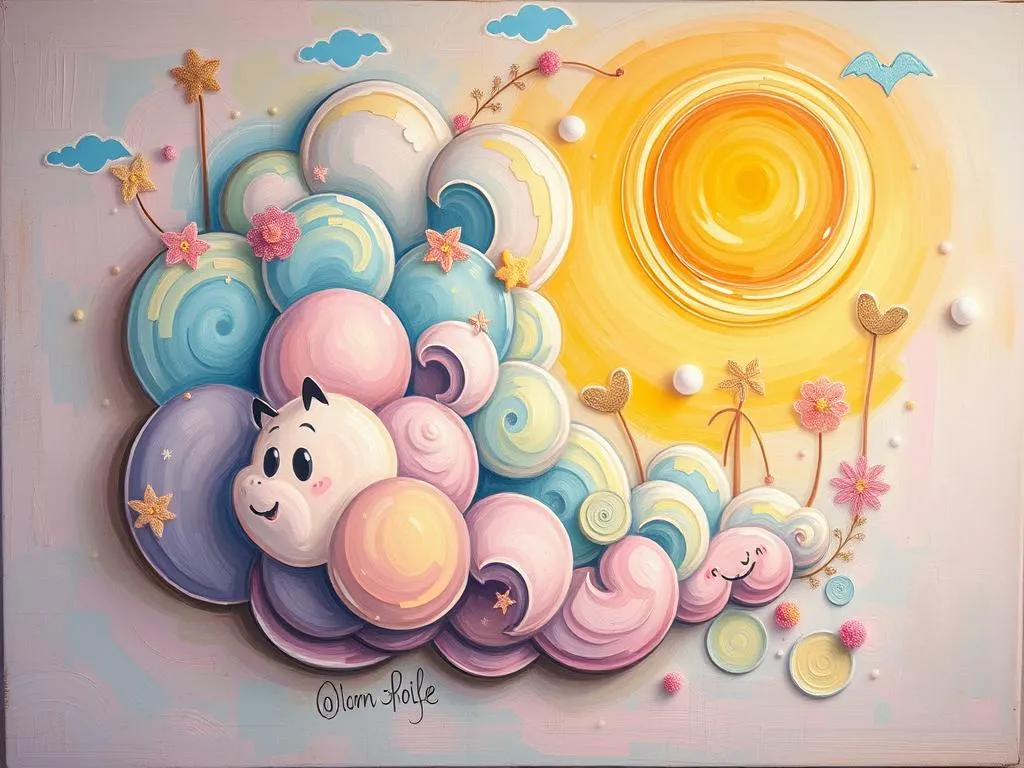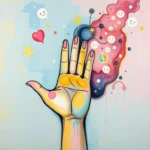
Have you ever woken up in a cold sweat, heart racing, from a dream that felt all too real? Dreams can be a mysterious landscape, filled with symbols and emotions that often mirror our waking lives. They can be exciting, terrifying, or even downright bizarre, but they all serve a purpose. Just like whispers from our subconscious, dreams convey messages that can guide us toward self-discovery and healing. Understanding these messages can help us navigate our waking lives with more clarity and intention.
In our journey through the dream realm, we’ll explore the symbolic language of dreams, delve into specific experiences that resonate with many of us, and discover how these nighttime narratives can foster personal growth. Whether your dreams leave you feeling empowered or perplexed, there’s always a lesson waiting to be uncovered. Grab a cup of tea, get cozy, and let’s embark on this exploration together.
Unveiling the Veil: Decoding Dream Symbols
The world of dreams is rich with symbols that can be deeply personal yet universally recognized. Understanding these symbols can be akin to translating a foreign language, where each element offers a unique insight into our psyche. When we break down the symbolic meanings of common dream elements, we can begin to see patterns that reflect our thoughts, feelings, and experiences.
Take water, for example. In many cultures, water symbolizes emotions and the unconscious mind. Dreaming of clear, flowing water might indicate a sense of peace and emotional clarity, while murky or turbulent water could represent confusion or emotional turmoil. Similarly, flying often symbolizes a desire for freedom or escape from life’s pressures. Conversely, if you dream of falling, it may reflect feelings of being overwhelmed or out of control.
Other symbols like doors and keys often represent opportunities and choices in life. A locked door might signify a barrier you feel in your waking life, while finding a key could indicate a breakthrough or a new path opening up for you. Embracing these symbols allows us to tap into our inner wisdom and gain insights into our personal journeys. Remember, the key is to reflect on what these symbols mean to you personally, as their meanings can shift based on individual experiences and cultural backgrounds.
Dreamscapes: Tales of Experience
Now that we’ve explored the symbolic language of dreams, let’s dive into some specific scenarios that many people encounter. Each dream scenario offers a unique insight into our emotional landscape and subconscious thoughts.
1. The Classic Test Dream
Imagine you find yourself sitting in a classroom, staring at a blank exam paper. Panic sets in as you realize you didn’t study for this test. This dream often reflects feelings of inadequacy or fear of failure. It’s a common experience that echoes our waking anxieties, reminding us to confront our self-doubt and prepare for challenges ahead.
2. The Naked Dream
In this scenario, you unexpectedly find yourself naked in a public setting. This dream can evoke feelings of vulnerability and exposure. It often signifies a fear of judgment or a desire to be more authentic. Embracing this dream may encourage you to reflect on areas in your life where you feel exposed and explore ways to cultivate self-acceptance.
3. The Abandonment Dream
Picture walking through a crowded street when you suddenly realize your friends have vanished. This feeling of abandonment can stem from insecurities or fears of losing connections. These dreams prompt us to evaluate our relationships and consider whether we need to invest more time and energy into maintaining our bonds with others.
4. The Recurring Nightmare
You find yourself trapped in an endless loop of a nightmare, like a never-ending chase or being lost in a maze. Recurring nightmares often signify unresolved issues or emotions that need addressing. They serve as a reminder to confront our fears and seek resolution in our waking lives. Consider what the nightmare is trying to reveal about your current situation and what steps you can take to break the cycle.
5. The Transformation Dream
In this dream, you might find yourself changing into another creature or person. This symbolizes growth and transformation, often reflecting your desire for change in your waking life. Embrace this dream as a sign that you’re evolving and that it’s okay to shed old layers to embrace your true self. It encourages you to explore new possibilities and let go of limiting beliefs.
Dreams as a Catalyst: The Path to Personal Growth
Now that we’ve explored the symbols and experiences found in dreams, let’s discuss how we can harness these insights for personal growth. Dreams can serve as powerful catalysts for self-reflection and transformation, guiding us toward a deeper understanding of ourselves and our lives.
Embrace the Journey
First and foremost, approach your dreams with an open mind. Keeping a dream journal can be a valuable tool in this process. Write down your dreams as soon as you wake up, capturing the emotions, symbols, and details. This practice can help you identify patterns over time and reveal recurring themes that may need your attention. Regularly revisiting your dreams allows you to track your emotional evolution and recognize areas where you’ve made progress.
Self-Reflection
Next, consider the emotions tied to your dreams. What feelings arise upon waking? Are there specific symbols that resonate with your current life situation? Allow yourself to sit with these feelings and explore their origins. Reflecting on your emotional landscape can lead to valuable insights about your motivations, fears, and desires.
Seek Support
Don’t hesitate to share your dreams with trusted friends or family members. Sometimes, discussing your dreams with others can provide fresh perspectives and insights that you may not have considered. They may help you uncover hidden meanings or offer support as you navigate the emotions tied to your dream experiences.
Take Action
Lastly, use the insights gained from your dreams to inspire action in your waking life. If a dream reveals a fear or challenge that you’ve been avoiding, consider taking small steps toward addressing it. Whether it’s having a difficult conversation or making a change in your daily routine, remember that dreams often mirror our waking concerns, and taking proactive steps can help alleviate anxiety and pave the way for growth.
Final Reflection: The Power of Your Dreams
As we wrap up this exploration of dream symbolism, experiences, and personal growth, remember that dreams are a powerful tool for self-discovery and healing. Each dream is a fragment of your inner world, waiting to be understood and embraced. The next time you find yourself in a vivid dream, take a moment to reflect on its meaning. Allow it to guide you toward greater self-awareness and empowerment.
In the grand tapestry of life, our dreams remind us that we are all on individual journeys filled with lessons, challenges, and transformations. Embrace the whispers of your subconscious, for they may just hold the keys to your personal growth and resilience. After all, the language of dreams is a reflection of the beautiful complexity that is you.







